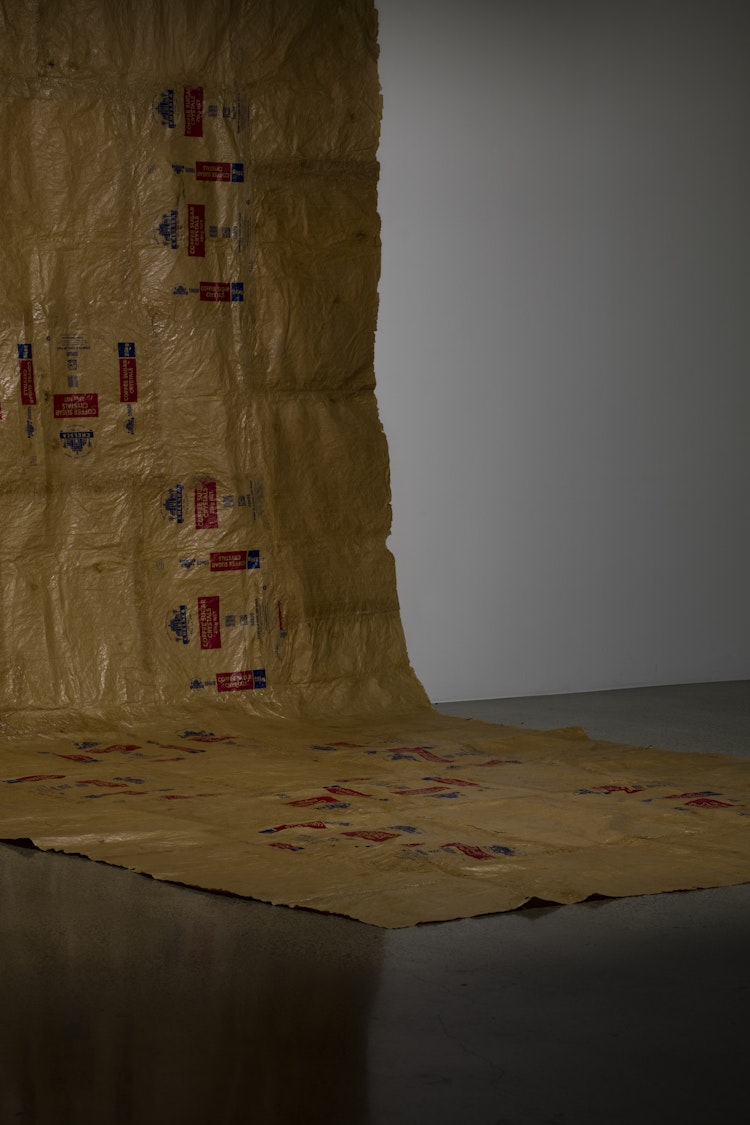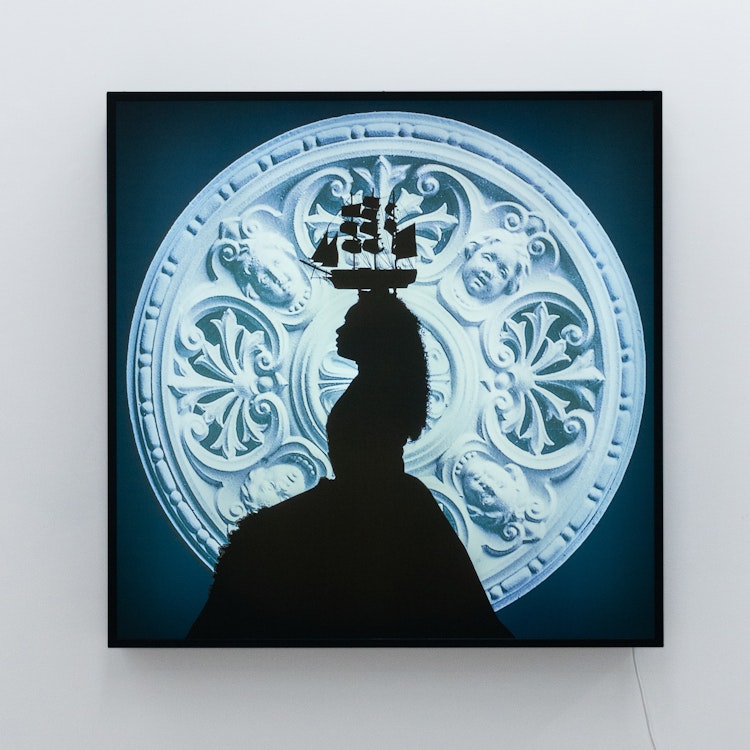

Jasmine Togo-Brisby’s practice explores how her South-Sea Islander whakapapa can define new material customs, calling on making practices that honour her ancestry while acknowledging the histories of plantation colonisation and forced migration across the Pacific.
Recent years have seen a welcome resurgence in contemporary art support of cultural knowledges and practices. From recalling the knowledge of making Māori aute (barkcloth) through to the upswell of women undergoing the Fijian practice of female-only veiqia tatau (female tattoo practice), the revitalisation of cultural art forms has been an unignorable presence in Aotearoa New Zealand’s recent gallery programming. But a fervent support of material art forms should not simplify the complexities of the pasts that these practices embody. As multiple artists show, as migration, capitalism and colonisation impact lives, so too are new threads woven into the fabric of cultural art.
Watching Indigenous arts in Aotearoa1, I have always been struck by the singularity of work produced by Jasmine Togo-Brisby. Forging an artistic perspective as a South Sea Islander, Togo-Brisby has a practice in which whakapapa (genealogy) figures uniquely. The name ‘South Sea Islander’ describes a group of peoples – and their descendants – who were abducted from their homes in the Pacific between 1847 to 1904 to work as indentured labourers on sugarcane plantations in Australia. Defined as a collective people by this twin condition of being from the Moana (Pacific ocean) but forcibly relocated to Australia, South Sea Islanders are an entity born in an in-between space. As Togo-Brisby writes, it involved ‘the bringing together of many nations and tribal groups, which would otherwise be disconnected, now into a new, shared entity. In that bondage birthed a new culture’.2
While South Sea Islanders are recognised as a distinct group, finding or defining their specific material culture is no simple task. Locating material evidence of South Sea Islander existence is an ongoing struggle. Again, in the words of Togo-Brisby: ‘Our community has had to reconcile the loss of customary practices and create new practices to tell our stories and ways of being.’3
Jasmine Togo-Brisby: If the walls could talk, they'd tell you my name, 2019-2020. Photography by Amber Jayne-Bayne.
Creating new customs that might retrospectively create a material genealogy to call one’s own is the heartbeat of Togo-Brisby’s practice. In thinking of new practices and evidence of ancestry, Togo-Brisby’s work entangles the materials of complicit slave ownership and capital accumulation together with cultural materials and processes that exist beyond the remit of slave histories.
Perhaps the clearest articulation of this is Togo-Brisby’s work Re:finery (2016). The title itself holds multiple readings. Like an email subject line, ‘Re:’ points towards splendid textiles, finery, as the primary object. Across the Moana, one of the most admired and ornate fibres is barkcloth. Each culture has its own Indigenous barkcloth practice. In Sāmoa, it is siapo; in Tonga, ngatu; in Niue, hiapo.
‘Refinery’ also denotes an industrial setting where substances are processed. In New Zealand, the Chelsea sugar factory in Auckland was used to process sugar harvested in Queensland, often from plantations that used South Sea Island labour. While the Chelsea sugar factory is famous in New Zealand, and the site of popular school field trips, Togo-Brisby’s research reveals its complicity in the Pacific slave trade, and its relevance to South Sea Island genealogy too.
In Re:finery, sugar bags have been flattened, beaten and adhered to emulate a nemasitse (Ni-Vanuatu barkcloth). The work is installed in the manner of a large tapa (decorated barkcloth); hung high on the wall, draping down to sit on the floor. The ‘Chelsea sugar’ branding has been placed to create a pattern reminiscent of tapa marks. Where South Sea Islanders are defined by sugar more than by textiles, Togo-Brisby turns to the materials of sugar production to create a new cultural textile.


Materials complicit in the Pacific slave trade appear frequently in the Togo-Brisby’s practice as the starting point for South Sea Islander imagery. Her most recent research focuses on Wunderlich ceiling panels. These ornate pressed-tin designs were produced by the Sydney-based, family-owned Wunderlich company. They adorn a number of buildings and often hold heritage-protected status. Locally, they can be found across the high ornate ceilings of the Wellington Town Hall where they recently underwent refurbishment. Digital catalogues number the designs for posterity, as well as requests for replicas.
Not long ago, Togo-Brisby discovered that the Wunderlich family acquired her great-great-grandparents in 1899 to work as enslaved house servants. Comparing the heritage status of these pressed-tin designs with the relative invisibility of South Sea Islanders, Togo-Brisby has been re-purposing Wunderlich designs. For If these walls could talk, they’d tell you my name (2019–20), a series of large public lightboxes, Togo-Brisby superimposes silhouettes of the artist, the artist’s mother and the artist’s daughter on top of images of Wunderlich ceilings from the Wellington Town Hall. In her solo exhibitions Dear Mrs Wunderlich (2020) and In the Rooms of Our Bodies (2021), replicas of these pressed-tin designs have been cut out to create large-scale lei (a Polynesian garland of flowers), or painted over with symbols of South Sea Islander identity developed through Togo-Brisby’s practice. These include ships, crows and portraits of South Sea Islander family, the most material evidence of South Sea Islander existence of them all.


While these works might be read as a criticism of Pacific slave trade materials, or as attempts to create hybridised cultural artefacts, they might also be interpreted as a means of reclaiming already protected ‘heritage’ artefacts to write South Sea Islanders into history. As the artist once shared in an artist talk in 2020, ‘when google searching Wunderlich ceilings, not only will you find images of their pressed tin panels but my artworks also have started to appear. The algorithm had accepted us as Wunderlich material culture.’ From somewhere between the material archives of companies complicit in Pacific slavery and the cultural making traditions of the Moana emerges a new artistic whakapapa. South Sea Islanders were worked to create a material legacy for capital accumulation, enshrined in heritage buildings and its adornments. Now, Jasmine Togo-Brisby is putting that legacy to work in creating a history for South Sea Islanders.


